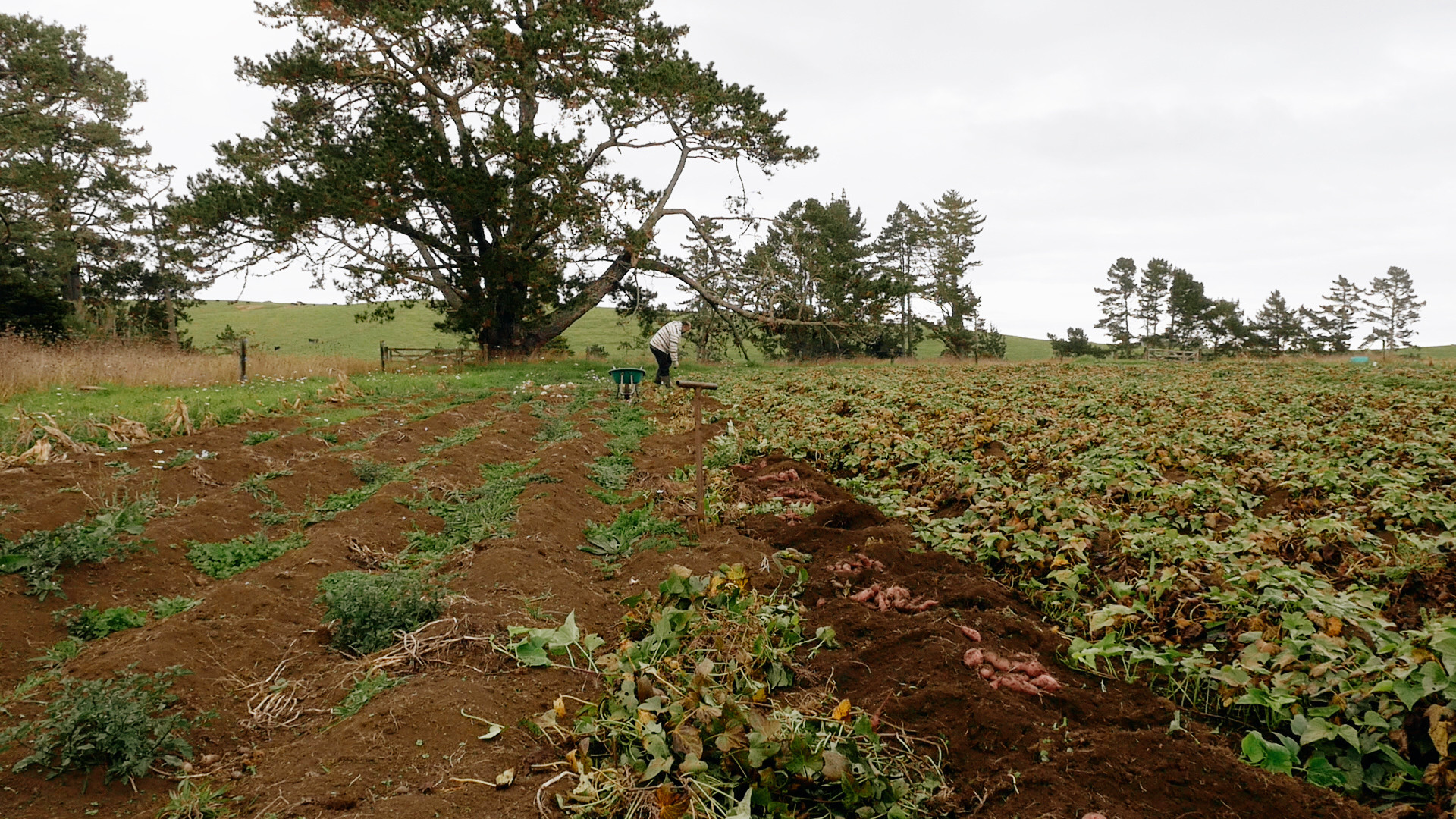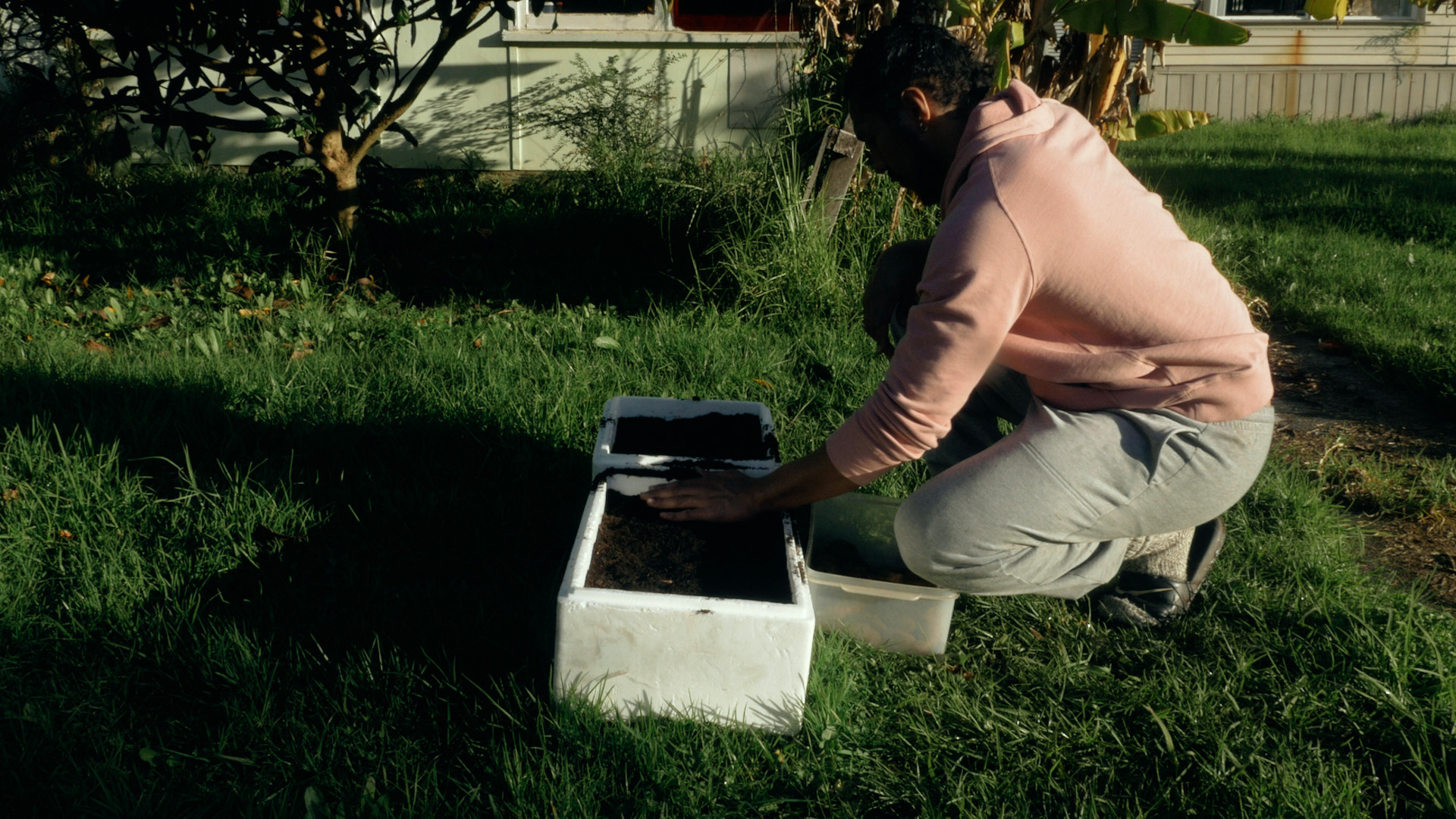Te tomo kōhua

Still from ‘Ma'u pe kai’ by Matavai Taulangau. Courtesy of the artist.

Still from ‘Ma'u pe kai’ by Matavai Taulangau. Courtesy of the artist.

Still from ‘Ma'u pe kai’ by Matavai Taulangau. Courtesy of the artist.

Still from ‘Ma'u pe kai’ by Matavai Taulangau. Courtesy of the artist.

Still from ‘Ma'u pe kai’ by Matavai Taulangau. Courtesy of the artist.

Still from ‘Making Like a Forest: Common Unity Project Aotearoa’ by Xin Cheng and Adam Ben-Dror. Courtesy of the artists.

Still from ‘Making Like a Forest: Common Unity Project Aotearoa’ by Xin Cheng and Adam Ben-Dror. Courtesy of the artists.

Still from ‘Making Like a Forest: Common Unity Project Aotearoa’ by Xin Cheng and Adam Ben-Dror. Courtesy of the artists.

Still from ‘Making Like a Forest: Common Unity Project Aotearoa’ by Xin Cheng and Adam Ben-Dror. Courtesy of the artists.
Artspace Aotearoa are pleased to present Te tomo kōhua, a cinema programme developed and organised by Blaine Western. As a follow-up to OUTGOING DESPATCH, our first street cinema project, Te tomo kōhua is the second iteration that brings to the fore moving image and time-based work from here and across the world, representing urgent social concerns through artistic practices.
Viewable from the exterior of the gallery, Te tomo kōhua, exists as a residue of the thinking, processes, and exchanges made possible throughout the exhibition Slow Boil (Artspace Aotearoa, 2021) that explored overlaps between identity, kai/food, hapori/community, and mana motuhake. The project invites a selection of artists to unpack existing bodies of works that explore the relationship between kai, community, and place within a new set of limitations - a lattice structure will support each project that takes its cue from the exhibition vocabulary of Slow Boil. Artists are invited to exhibit residual and processual materials from these bodies of work in order to think through time-based works beyond a surface or a sound — more as a constellation of events, interactions, and exchange.
Te tomo kōhua can be viewed in the window of Artspace Aotearoa daily, 18 October — 19 December 2021.
--
Xin Cheng and Adam Ben-Dror
Making Like a Forest: Common Unity Project Aotearoa
Common Unity Project Aotearoa is a Te Awakairangi Hutt Valley-based initiative where organic farms sprout in schools and prison grounds and the harvests are made into children’s lunches by volunteers. The artist’s film follows intimately the transformations in their urban farms: composting, growing, sharing, foraging and harvesting, with kindness and care from humans and more-than humans. An invitation to slow down and experience the moments of kinship between humans and the natural world and the possibilities for diverse co-existence with our local environments.
Originally made with support from Creative New Zealand, Te Whare Hēra Residency and Dowse Art Museum.
Featuring (in order of appearance):
Pam Adams, Glenda Weston, Jacob McKay, David Keepa, Kumar Kumareswaran, Roy Walker, Naomi Joy Smith, Hannah Zwartz, Elise Ranck, Gordon Brailsford, Seian Lowe, Andrew Nome and Julia Milne
In consultation with:
Jesús Pulpón, Chinook Ulrich Schneider, Karla Bauer
--
Matavai Taulangaū
Ma'u pe kai
Kaikohe is a small town located in Northland, a town that reflects the village culture my fāmili (family) were accustomed to back in Tonga. My ongo mātuʻa (parents) made the decision to raise our fāmili in Kaikohe. They left their fonua in exchange for the whenua in Aotearoa. As my father had said, 'Toʻuanga fiemalie pe, he teu ave koe ki Nusila mo fanau', God had brought us here. My parents’ migration brought about a shift in perception, towards the idea that value was only obtained through Western knowledge.
The first time I heard the phrase 'maʻu pe kai' was filming a harvest of kumala in Okaihau, a town not far from where I grew up, where a community garden is cared for by local Tongans. Being a visitor to this harvest, I noticed 'maʻu pe kai' was frequently used as a modest reply. A reply, my mother explained, that was often used when fishing. A humble way of acknowledging that there wasn’t a lot of fish caught, but enough to feed the people.
Reestablishing the connection to my culture has begun through understanding cultural practices and why we maintain them. Food and labour are a source of remembrance, learning and knowledge. Through filming the labour of kumala, knowing through experience is shown. Each patch of soil is a source of cultural knowledge. The act of filming is to assert the significance of Indigenous Tongan knowledge and even though memories fade, the hands who tend the soil will always remember.
Maʻu Pe Kai is a moving image and photographic installation by Matavai Taulangaū that extends the initial exhibition of the work at Enjoy Contemporary Art Space in 2019. Maʻu Pe Kai documents interrelated Kumala Polopolo, kumala harvests: one by the Tongan community in Okaihau in Northland, one by the artist’s mother in nearby Kaikohe, and one by the artist in Tāmaki Makaurau Auckland. Taulangaū envisages the body of work as ongoing, seasonal and relational, where he will return to document the harvest yearly. As part of Te Tomo Kōhua, Taulangaū shows a new edit of the work accompanied by photographs taken during the last harvest, a documentary process that was disrupted by restrictions of COVID-19.
--
Mohamed Sleiman Labat and Pekka Niskanen
The Desert at the Bottom of the Sea and Life in Sand
In August 2019, Mohamed Sleiman Labat and Pekka Niskanen collaborated on a body of work during a residency period at the Kone Foundation’s Lauttasaari Manor in Finland. They went sailing for two days, looking for evidence of algae blooms within the surrounding Baltic Sea (a result of warming ocean temperatures and eutrophication caused by run-off of inorganic phosphorus and nitrate fertilizers used within agriculture and forestry in the baltic region). As the research took place in late August, the blue-green algal blooms had almost disappeared but what accompanies the visuals is reflections from Sleiman Labat that detail Sahrawi existence, as the camera pans, cuts and scans this vast body of water, we are presented with a wandering and very different oral tapestry of Sahrawi dispossession, resilience and relationships to minerals, intensity of elements and bodies.
ADAM BEN-DROR
Adam is a multidisciplinary artist, designer and inventor currently teaching design at Victoria University of Wellington. He co-runs the Somatic Incubator, which hosts a weekly somatic movement class and invites guest artists to run workshops and intensives. He also runs the Negative Emissions and Waste Studies Programme (NEWS) Pōneke which collaborates with art centres, schools and the general public using waste as its primary artistic and research material. He has exhibited at The Dowse Art Museum, MEANWHILE Gallery, The Performance Arcade, Performance Art Week Aotearoa and internationally at the Barbican Center (London), Tekniska museet (Stockholm), Science Gallery (Dublin), Onassis Stegi (Athens), Design Week (Istanbul). Previously he designed interactive public sculptures for Auckland City Council while working at multidisciplinary design studio Alt Group. His collaborative works have received multiple awards from the Designers Institute of New Zealand including the prestigious purple pin award.
Adam studied fine arts at the University of Auckland, design at Victoria University Wellington and robotics at Carnegie Mellon University, Pittsburgh, USA.
XIN CHENG
Xin Cheng enjoys walking, listening and being curious around interspecies kinship, ecologies and everyday resourcefulness. She has worked in many contexts across art, design and self-organising communities between Aotearoa and Europe. Currently she lives in Tāmaki Makaurau.
Mohamed Sleiman Labat
Mohamed Sleiman Labat is a Sahrawi visual artist and a poet from that is based in Sahrawi refugee camps in Algerian territory. He was born and raised in these camps. In 2016, after graduating from Batna University (Batna, Algeria) with a degree in English literature, Sleiman Labat went back to his community. As well as having a rich, multidisciplinary practice that spans visual art, photography, poetry and translation, Sleiman Labat has built a multipurpose community and artist studio space Motif Art Studio in Samara camp. The studio itself is built from discarded materials that Sleiman Labat has collected.
Pekka Niskanen
Pekka Niskanen is a Helsinki and Paris based media artist, filmmaker, researcher, and a Doctor of Fine Arts. He has been exhibiting since 1990 in museums, galleries and film festivals around Europe, North America and Asia. His dissertation in University of the Arts Helsinki is titled Art in the Construction of Identity Politics (2014). He has curated exhibitions in Finland and abroad. Niskanen has worked as a director of several community art film and video projects.
MATAVAI TAULANGAŪ
Taulangaū extends histories of documentary practice, rather than merely observing, he situates and becomes part of the subject and places he documents. He brings focus to different modes of work, labour, community and identity through a lens-based approach. His video work and photography strives to highlight forms of labour and knowledge that are often overlooked, emphasising the value of community, people and their experiences.
--
Xin Cheng and Adam Ben-Dror
Monday 18 October - Sunday 7 November
Matavai Taulangaū
Monday 8 November - Sunday 28 November
Mohamed Sleiman Labat
Monday 29 November - Sunday 19 December